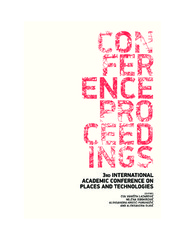Prikaz osnovnih podataka o dokumentu
Energy refurbishment of public buildings in Serbia
| dc.creator | Jovanović Popović, Milica | |
| dc.creator | Nedić, Miloš | |
| dc.creator | Đukanović, Ljiljana | |
| dc.date.accessioned | 2020-03-04T10:25:14Z | |
| dc.date.available | 2020-03-04T10:25:14Z | |
| dc.date.issued | 2016 | |
| dc.identifier.isbn | 978-86-7924-161-0 | |
| dc.identifier.uri | https://raf.arh.bg.ac.rs/handle/123456789/485 | |
| dc.description.abstract | By harmonizing national legislation to European codes concerning energy efficiency in building sector, Serbia took commitment to improve energy efficiency of national government buildings. Following the Directive 2012/27/EU principles, refurbishment of this part of building stock is recognized as a leading example in long-term process of applying energy efficiency regulations at national level. In this respect, both national and local authorities are expected to perform systematization and current state assessment of respected building stock, followed by a proposal for their energy refurbishment. Basic feature of this part of Serbian building stock is represented by the fact that almost all buildings (from one occupied by central government, through localscale administration buildings, to educational and medical care institutions) are made long before thermal-protection regulations were introduced. That indicates overall divergence from adopted codes and predefined standards in energy efficiency. On the other hand, these buildings are often founded of high architectural value and protected as building heritage, what significantly reduces possible options and energy refurbishment scenarios. Initial steps in implementation of adopted energy efficiency principles were made in Serbia during 2015, when in cooperation of German international cooperation organisation – GIZ and Faculty of Architecture from Belgrade, work has started on assessment and energy certification of public buildings. First energy certificates (energy passports) for public buildings in Serbia were issued, starting from three most valuable buildings of national authorities: Government building, The National Assembly, and The Palace of Serbia. At the same time, aiming to investigate their energy refurbishment potentials, technical brochures are prepared, showing possible, code-related, options for further energy improvement of buildings thermal envelope. This paper will present results obtained during energy-assessment and energy-certification process of this particular buildings, showing at the same time their specificity, that pretty much traces possible category and range of proposed energy refurbishment scenarios. | en |
| dc.language.iso | en | sr |
| dc.publisher | Belgrade : University of Belgrade - Faculty of Architecture | sr |
| dc.rights | openAccess | sr |
| dc.source | Conference Proceedings [Elektronski izvor] / 3rd international Academic Conference on Places and Technologies, [14-15.04.2016, Belgrade] | sr |
| dc.subject | Energy efficiency | sr |
| dc.subject | Public buildings | sr |
| dc.subject | Energy refurbishment | sr |
| dc.title | Energy refurbishment of public buildings in Serbia | en |
| dc.type | conferenceObject | sr |
| dc.rights.license | ARR | sr |
| dcterms.abstract | Недић, Милош; Јовановић Поповић, Милица; Ђукановић, Љиљана; | |
| dc.citation.spage | 27 | |
| dc.citation.epage | 34 | |
| dc.identifier.fulltext | https://raf.arh.bg.ac.rs/bitstream/id/1218/bitstream_1218.pdf | |
| dc.identifier.rcub | https://hdl.handle.net/21.15107/rcub_raf_485 | |
| dc.type.version | publishedVersion | sr |

